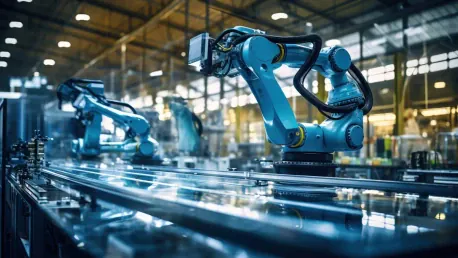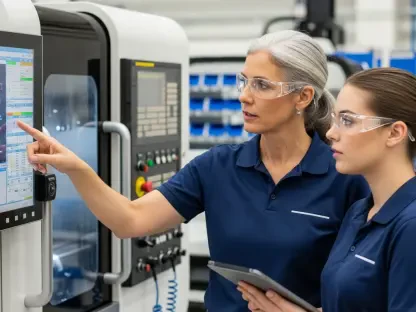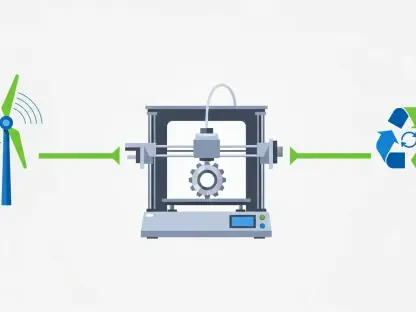Trade wars have become a prominent feature in global economic relations, with the conflict between the United States and China being one of the most significant. These trade tensions are reshaping various industries, including the robotics and automation sector, which relies significantly on international supply chains. Trade wars, through the imposition of tariffs, export restrictions, and shifting trade alliances, are disrupting the flow of essential components, compelling companies to re-evaluate their manufacturing and sourcing strategies. This article explores how these trade wars are affecting the robotics and automation industry, highlighting key impacts on supply chains, costs, market dynamics, and strategic responses from companies.
Disrupted Supply Chains
The impact of trade wars on automation supply chains is profound, with the disrupted flow of components leading to increased prices for crucial inputs such as semiconductors, sensors, and rare-earth materials. The imposition of tariffs and export restrictions raises costs for manufacturers and integrators, putting pressure on margins. Delays in customs clearance and longer delivery times further stall the deployment of robotic systems, negatively affecting productivity and efficiency. In response, companies are adopting the “China+1” strategy, diversifying manufacturing bases to regions like Southeast Asia, India, and Mexico to mitigate the risk associated with dependency on a single market.
Additionally, reshoring or near-shoring efforts are becoming more common as companies seek to reduce their reliance on volatile trade routes. These strategies involve moving manufacturing closer to home markets to avoid the uncertainties tied to international trade disputes. However, this shift requires significant investment in time and capital, as establishing new manufacturing facilities or scaling up existing ones involves considerable logistical and financial challenges. Companies are also exploring dual sourcing to ensure a steady supply of components, further evidence of the industry’s adaptive strategies to combat trade disruptions.
Cost Pressures and Market Dynamics
Robotics companies are experiencing intense cost pressures due to the elevated prices of imported components driven by tariffs. Companies like Fanuc, ABB, and Yaskawa are grappling with the challenge of maintaining pricing competitiveness while managing rising costs. These financial pressures may either be absorbed by the companies or passed onto consumers, making products more expensive and potentially less attractive in price-sensitive markets. For companies with international reach like Kuka, political scrutiny in Western markets adds layers of complexity, affecting strategic decisions and market positioning.
Conversely, local startups and mid-sized firms in North America and Europe may find opportunities for growth due to increased domestic demand fueled by “buy local” policies. These initiatives promote the local production and consumption of goods, reducing reliance on international supply chains. However, trade uncertainties can deter investments in factory automation, particularly in sectors with cyclical capital spending like automotive and electronics manufacturing. Venture capital investments in hardware startups may also be hampered by geopolitical risks, further complicating the industry’s growth trajectory.
Strategic Adaptations and Localization Trends
In response to the persistent trade tensions, companies are increasingly turning to supply chain localization. This trend toward regional self-sufficiency and dual sourcing aims to enhance resilience against future trade disruptions. Robotics companies are strategically stockpiling critical components to hedge against supply chain volatility, ensuring they can continue operations during periods of trade uncertainty. Industry associations are actively lobbying for stable trade policies to protect innovation and maintain the competitive edge of the robotics sector in the global market.
Moreover, the decoupling strategy, particularly evident in the repercussions of the US-China trade war, has seen companies like American firms manufacturing more within NAFTA countries. This approach is costly and only partially effective, highlighting the complexity of disentangling established trade relationships. Chinese companies are shifting their focus to Southeast Asia and Europe to circumvent trade barriers, reflecting the dynamic adjustments companies must make in response to geopolitical shifts. Ultimately, these adaptations signify a pragmatic approach by the industry to navigate the challenges imposed by trade wars.
Future Considerations
Trade wars have become a notable factor in the arena of global economic relations, with the ongoing conflict between the United States and China standing out as particularly impactful. These trade skirmishes are reconfiguring a range of industries, especially the robotics and automation sector, which heavily depends on international supply lines. By imposing tariffs, setting up export controls, and altering trade partnerships, trade wars disrupt the steady flow of vital components. This forces companies to reconsider their manufacturing and sourcing strategies. This article delves into the specific ways trade wars influence the robotics and automation industry, emphasizing the major effects on supply chains, costs, market dynamics, and the strategic moves companies adopt in response. As trade policies evolve, the robotics industry must adapt, balancing acquiring necessary materials and navigating fluctuating economic landscapes. Such adjustments shape the future of automation, making the industry resilient yet challenged by global trade issues.









